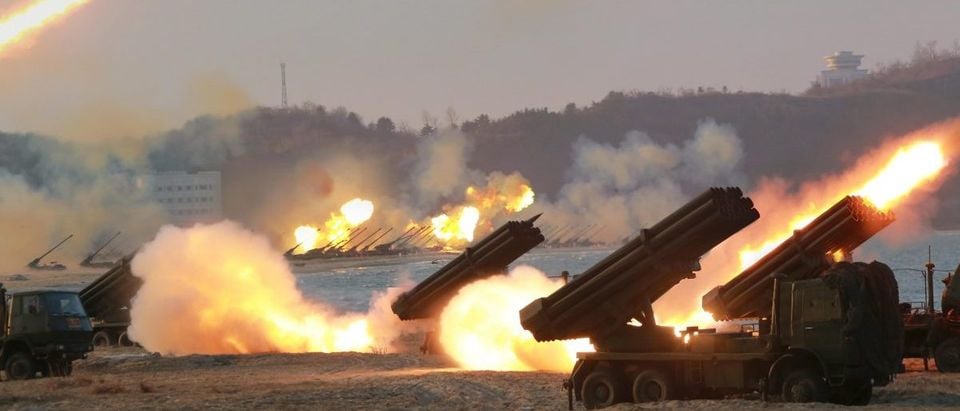The second highest-ranking U.S. military official said Tuesday that the U.S. should consider the use of military force against North Korea.
North Korea successfully tested an intercontinental ballistic missile that can range certain parts of the U.S. earlier this month, although it could not do so with “any degree of accuracy,” Vice Chairman of the Joint Chiefs of Staff General Paul Selva told the Senate Arms Services Committee Tuesday, adding that the missile — the Hwasong-14 — appears to lack the necessary guidance capabilities.
Initial estimates of the range of North Korea’s new ICBM stopped at Alaska, but further analysis revealed that the North Koreans could potentially strike the West Coast, with some expert observers even claiming the HS-14 can reach New York.
“What the experts tell me is that the North Koreans have yet to demonstrate the capacity to do the guidance and control that would be required” to strike a specific target in the U.S., Selva explained. Questions are also circulating regarding re-entry capability and the survivability of the warhead, despite North Korea’s assurances about the weapon’s abilities.
While North Korea’s ICBM may not be a flawless masterpiece, it is a significant step forward. The country is advancing its nuclear and ballistic missile programs at an accelerated rate, suggesting that the capabilities the North lacks now will be developed sooner or later.
The U.S. and its allies and strategic partners are preparing responses to the growing threat from a North Korea with enhanced capabilities. One option appears to be the application of military force, Selva said before the SASC.
“I think we have to entertain that potential option,” Selva said, responding to a question about the possibility of preemptive military strikes on North Korea to prevent Kim Jong-un from developing an ICBM armed with a nuclear warhead.
The vice chairman explained that the U.S. has two parallel lines of effort. One is diplomatically and militarily stopping North Korea from moving forward with its efforts to develop weapons that could deliver a nuclear payload to targets in the U.S. The second is the development of ballistic missile defense systems that can protect the homeland from a North Korean missile.
Military action is an option on the table, but it would be extremely costly.
“We need to think seriously about what the consequences of that action might be,” Selva remarked.
Secretary of Defense James Mattis previously said that a renewed conflict with North Korea would be “tragic on an unbelievable scale,” stressing that while we would win, victory would come at a high cost and the loss of countless lives on both sides.
For the time being, the U.S. appears committed to a diplomatic solution through a policy of “maximum pressure and engagement,” which involves military deterrence, economic sanctions, and international pressure in cooperation with American allies and partners, as well as China, North Korea’s largest benefactor.
Send tips to ryan@
All content created by the Daily Caller News Foundation, an independent and nonpartisan newswire service, is available without charge to any legitimate news publisher that can provide a large audience. All republished articles must include our logo, our reporter’s byline and their DCNF affiliation. For any questions about our guidelines or partnering with us, please contact licensing@dailycallernewsfoundation.org.


